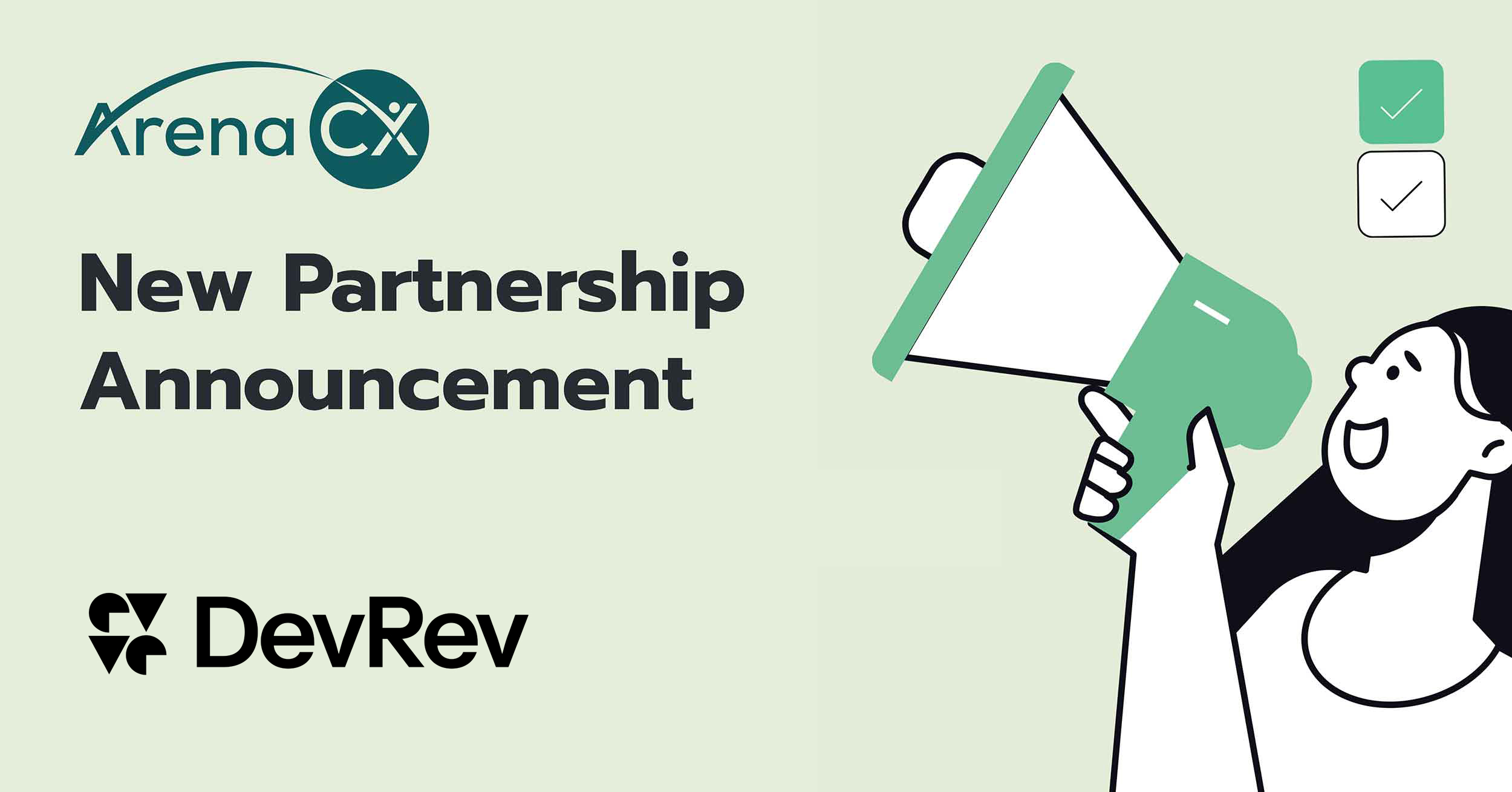As most customer service leaders know, having a reliable demand forecast is essential to making the right scheduling and staffing decisions: under-forecast and risk burning out overworked agents, or over-forecast and have agents sitting around idly burdening your business with unnecessary costs.
ArenaCX, along with our partner Forethough.ai recently hosted a panel discussion to address a topic that’s been on every CX leader’s mind:
How can I effectively manage the ebbs and flows in my customer service demand?

An unexpected influx of ticket volume may lead a company to recruit helpers from other parts of the business or even hire temps to help with the workload.
In this episode of CX Power Hour, we sat down with CX leaders to discuss what proactive measures customer service leaders can take to put their business in a better position to weather any demand situation.
In our panelist discussion host Amanda Malach, SVP of Finance & Marketing for ArenaCX sat down with ArenaCX’s own CEO Doc Shufelt, Forethought.ai’s Head of Customer Experience, Rose Wang, Zendesk’s Senior Director of Support, Ben Collet as well as Zendesk’s Director of Sales Enablement, Michael Veramo to discuss the critical technologies and approaches organizations can adopt to become more flexible, reactive, and operationally efficient, while improving the customer experience.
Discussion Highlights & CX Takeaways
Technology & Self-Service

Amanda:
“In your experience leading a support organization, what would you say are the tactical next steps that a team would take on to better prepare themselves: You have your team and your CRM… what’s next?”

Ben:
“I think right away, we need to take a look at things like self service and making sure that not every conversation has to be a human driven conversation – like password resets, low-value transactional conversations – that’s the stuff that technology was built to automate.
By adopting a customer-facing knowledge base, I think these are entry-level things you start to talk about. But where it really gets interesting right now is that we’re seeing a convergence of technology.
How do I skills-based route the right ticket to the right advocate?
How can I surface knowledge base articles right within the message or conversation Im having with the customer without them having to click away?
And how do I maybe even offer up those answers so a customer can self-serve and consume an answer with the least friction and waiting time possible?
These are some of the things we would look at to start taking us from that one-size-fits-all approach to something that’s a little more sophisticated. That’s where I would look to Rose because there’s some really fun things that bots are doing. They’re not just reactive, they’re not just in the channel experience. They’re driving self-service. They’re converging on these customer experiences in ways that can help us scale to some degree and get started with making the most of our conversations.”

Rose:
“Technology is not a one-size-fits-all or a solution that will fix all of your problems. That’s not the point. It’s [asking] what are the problems that humans are facing today that technology can go and help make better. And that’s really how we think about helping develop AI as well as this technology.
So when we’re thinking about self service for example we’re thinking about your human agents. Is it fun for them to be answering questions like password reset over and over again? There’s a reason why there’s huge agent churn. Part of it is because their job isn’t the most pleasant. How can we take away the more manual tedious pieces so they can focus on what they’re best at: helping humans.
So how do we go about creating a tool that helps an agent in that moment. Think of thoughtfulness, digging deeply into the technology you’re looking at, and the vendor you’re looking at and asking these questions are very important.”

Michael:
You can’t just implement a technology and forget it. You can’t just remove that human element. A lot of organizations have tried that through just exclusive self-service and community based support. There’s just no way to get any [human] help when you need it. And so you can’t remove the human elements. I mean, any sort of sterile interaction is just not going to be pleasant so you can’t just implement and forget. You’ve got to continue to review so you can scale when in fact circumstance dictate an increase in volume.“
Agent Efficiency

Amanda:
“What are some of the key ways that agents can become more efficient. I.e. can one agent can do more work via channel changeups, means of communication, etc.)?”

Ben:
“How can we make our people as effective and efficient as possible? Some of these things are right there in their daily tasks. We use [the] knowledge center support (KCS) methodology [which is] essentially having an advocate link a ticket to an article to say this is relevant but it wasn’t enough. Just that motion in flight and getting back to the conversation with the customer is a great way to add value and then you can stack rank your content opportunities by the things that have the most votes or the most links to conversations. I think there’s a lot to be said that actually enables them to be more effective and efficient in their conversations.
If you look at your business, at all of your conversations over a quarter or over a year and you see that 50% of them are a single touch resolution, you’ve got to ask yourself is that a good thing or a bad thing. For some companies that’s amazing. For us at Zendesk where a lot of our conversations can be complex and consultative and where we see real value in customer loyalty by engaging in those conversations, we saw it as a target to bring down.
So how do we do that? One of the easiest ways was we tiered out our organization. Look at a median number of handle times. Anything before that median is Tier 1. Anything after that median is Tier 2. If 50% of your conversations are all about easy 15-minute quick getting started, turn the lights on [conversations], great!
You can build your customer care experience around that in a highly responsive way and reserve the rest of your technical support teams for those deeper conversations and in so doing you can make a highly available, highly responsive, team and you can also still get after those deeper technical engagements that are so meaningful and so valuable.
Organizational and Team Structure

Amanda:
“How do you recommend that businesses removing the human element of managing a team internally, prepare for or structure their operations in a way to build resiliency in?”

Doc:
“That’s the trillion dollar question, probably. What we’ve found successful and the model that we’re proponents of is diversification. Another thing technology allows us to do today is to be able to have lots of different teams that are essentially loosely coupled so you can have 10 people over here and 50 people there and 100 people over here and we can seamlessly divert tickets to wherever it is that either has the capacity or there is an event.
Our general belief that the more diversified we can be the more resilient we can be, the more scalable we can be. [Set up your team in a way that you’re] able to divert tickets to other partners. And you can do that really inexpensively today… with great tools that have incredible APIs, you can do those things and you can then match all your different needs with smaller partners that can do different things.
If you need a team that can scale really quickly, or if you need a team that can do A/B testing for you… we can do those things now. Taking what technology gives us from both the analytical perspective as well as in the control in real time of where things can go and who is getting those tickets it allows you to build a network that is largely insulated from any specific shutoff even if its’ a shock as substantive as a ransomware attack or COVID.”
Related Articles
Want more? Here are some other blog posts, topics and articles you might be interested in.












